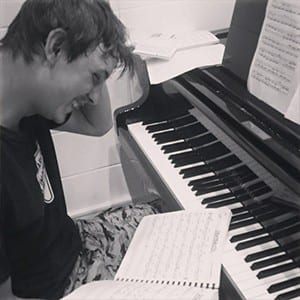Utilizing Visualisation for Piano Practice: Make the Most of Your Commute
We’ve all experienced the grind of the daily commute, often time spent curled and tensed up, gripping phones, waiting for claustrophobic journeys to end. It feels as though time is getting away from us, slipping through our fingers while we mourn all the things we really want to do. In the UK, people spend the equivalent of over a year of their lives commuting. But what if I told you, you could use this time to improve your piano playing?
What is Sensory Motor Learning?
Sensory motor learning refers to our bodies’ ability to improve and refine movements simply by thinking about them, a technique known as visualisation or mental imagery. By using this method, you can practice piano without even touching the keys.

The Power of Visualisation in Skill Development
Visualisation has been used by athletes for years as a way to condition the brain for success. The more you mentally rehearse, the more your brain becomes accustomed to performing the movements, making piano practice smoother and less stressful.
Guided Visualisation Reinforces Neural Pathways
Michael Phelps’ coach credits much of his success to visualisation—imagining a perfect race repeatedly in his mind. Similarly, pianists can mentally rehearse specific movements and sequences to reinforce their neural pathways.

How Visualisation Complements Physical Practice
Research shows that visualising an action activates the same brain regions as physically performing it. This means visualised practice can complement your physical piano practice, helping to build muscle memory and mental clarity.
How Visualization Enhances Learning and Performance
Visualisation allows pianists to practice without physical effort, improving mental focus and neuromuscular coordination. Andrew Garrido, for example, learned to play piano using a paper keyboard, proving that the mind’s power is sometimes more important than physical practice.

Multi-Sensory Visualisation: Beyond Just Seeing
True visualisation isn’t just about seeing; it involves a multi-sensory experience, where you can hear, feel, and even smell the piano keys. Engaging multiple senses helps reinforce the mental imagery and makes the practice more immersive.

Mindful Practice: Boosting Confidence and Well-Being
Visualisation is not only useful for improving piano skills but also serves as a form of mindfulness. By engaging in mindful practice, you can boost your confidence, reduce stress, and enhance your overall sense of well-being.
Give Visualisation a Try!
Visualisation techniques can significantly enhance your piano practice and transform your performance. Next time you’re on your commute or during downtime, give it a try and see how it improves your playing.

Till next time,
Aoife
